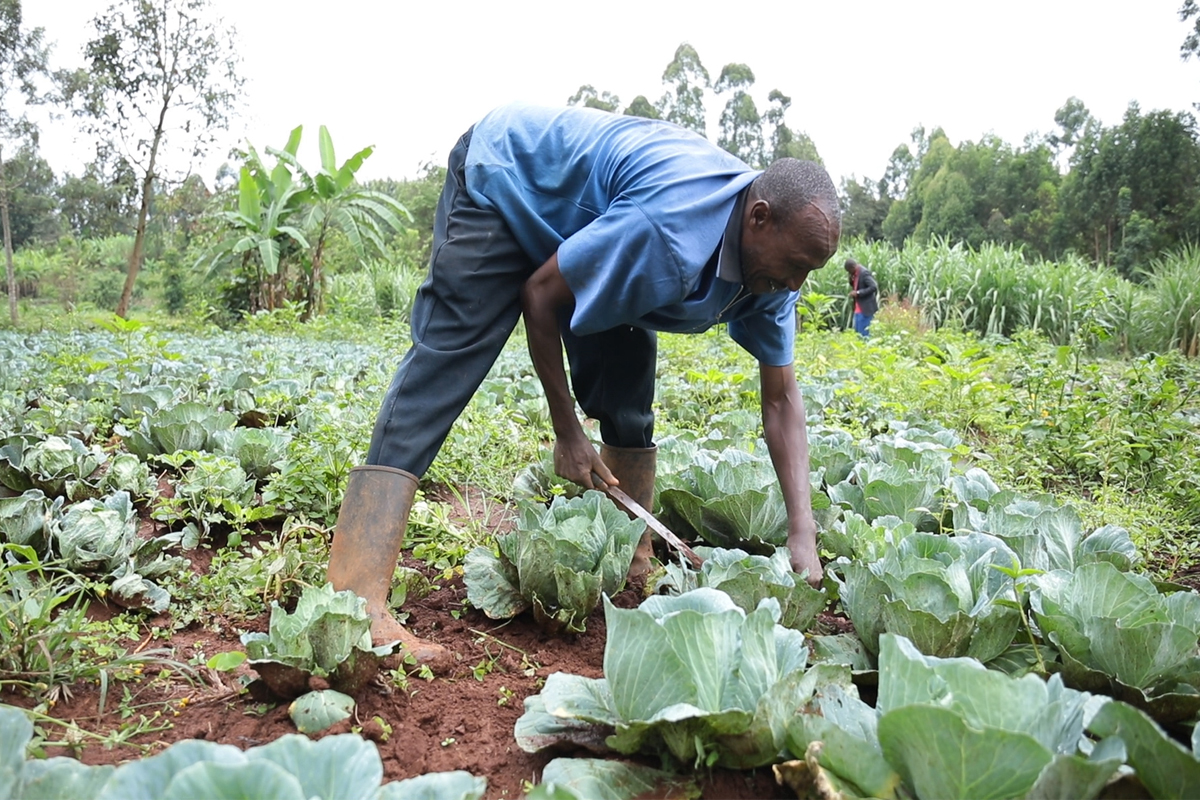Source: DIRAJ
In Kirinyaga County, Central Kenya, Francis Mukono and a group of other local farmers have been practising organic farming for over a year now, with a bulk buyer exporting their produce to Europe at favourable prices. But when we visited his farm, it looked abandoned, overgrown with weeds and part of the cabbage crop uprooted and fed to animals. COVID-19 restrictions disrupted access to the export market and with the local market flooded, they are stuck with their produce. The experience of Mukono and his group is one that is all too familiar as risk and uncertainty intensify in the agricultural sector.
We need a plan
According to Massimo Giovanola, lead technical specialist for the Platform for Agricultural Risk Management (PARM) at the International Fund for Agricultural Development (IFAD), this trend is a reminder that the world now needs new thinking in risk management not only at community and national levels but also at regional and global levels. “Prioritizing risks is now more than ever urgent. To carefully consider risk exposure and prioritize them accordingly allows you to also prioritize the tools to address them. This requires a comprehensive plan,” he said. According to a study by the New Partnership for African Development – NEPAD, the agricultural sector in Africa accounts for half or more of the working population, and about 70% in the East African region. The study estimates that over the last 30 years, half of all new entrants to Africa’s job market have joined the agricultural sector. Risks to the agricultural sector, therefore, have far-reaching effects on development outcomes in the region.
Agriculture stability reduces poverty
According to Mr. Giovanola, the major risks facing agriculture and food production in the sub-Saharan Africa region can be classified into three categories of weather, production-related risks and market and financial related risks. Extreme weather events have been highlighted as some of the greatest challenges to Africa’s development as floods and droughts push millions of people into poverty and hunger each year. The desert locust invasion of the east and horn of Africa region is just one example of the production-related challenges that farmers are contending within the region. And in Malawi, Chimwemwe Njoloma recently reported how market disruptions due to COVID-19 restrictions was pushing some small scale farmers into poverty. Proof of how globally interconnected markets can have negative impacts on local small-scale farmers. “Improving the stability of the agricultural system reduces poverty and creates more opportunity for people. This is one way of improving the resilience of farming communities to shocks,” said Mr. Giovanola. For the mostly subsistence African farmers, achieving this stability even at the community level is complex and requires rigorous and holistic approaches that involve all stakeholders; policymakers, private sector stakeholders along the value chain and the farming communities.
A risk informed approach
The Platform for Agricultural Risk Management (PARM) whose lead technical specialist Mr. Giovanola is, works with countries and development partners in sub-Saharan Africa to promotes this approach. This approach relies on evidence of risks and provides tools to proactively manage those risks. This includes integrating agricultural risk management into development policy and farm practices and investing sufficiently in sustainable agriculture. For farmers like Mukono, Mr. Giovanola says the best place to begin is to diversify their production. This he says reduces their level of exposure to risks. But it ultimately takes the involvement of all players and many different approaches to effectively manage risk.
The people have a role
While national and local authorities have a major responsibility in encouraging agricultural risk management, Mr. Giovanola says impact will be felt when farmers too play their part. He gave a few tips on how farmers can approach a market that is only getting more complex: Farmers, with the support of authorities need to embrace new tools that are being developed to aid affordable market analysis. “if the market is asking for tomatoes for example, and you provide carrots then the market will punish you,” he said. He added that ensuring that quality of produce is aligned to the standards of the market is equally important and can be achieved with the support of governments providing reliable weather data and technical support to local farmers. “If farmers want to survive in our millennium, they have to understand that they have to become bigger. Aggregating as cooperatives for example is now not an option but a priority,” he said.
